We took eleven different Mercury Marine propellers and tried them all on our McLay 4.8 Fortress powered by a Mercury 75 4S, to see what difference to performance and fuel economy, a few degrees of pitch and inches of diameter made.
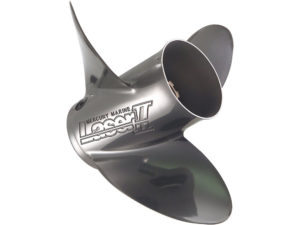
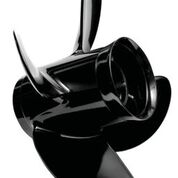
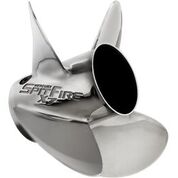
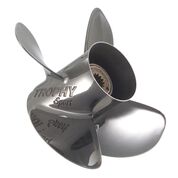
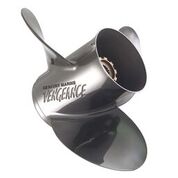
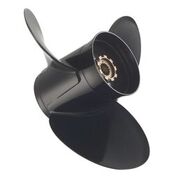
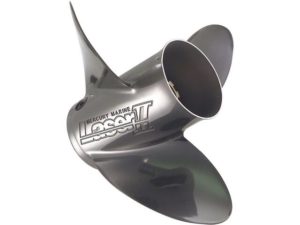
We have been running a McLay 4 .5 Fortress with Merc power for three seasons now and after starting with a Mercury 60 4S, we upgraded to a Mercury 75 4S last summer. It is a rocket ship and also very economical, although until now I didn’t have a handle on just how good it was. When I go fishing, I fill a 25-litre tote tank and a smaller 5 litre spare and head out for the day. I have never run out and even if I did I always have the electric Minn-Kota outboard to get me home at a slow and leisurely pace. Before the multi-prop test, we ran on Orakei Basin, I had been running a Mercury Spitfire 15 X7, four blade stainless propeller. But was that really the best one for the boat/engine combination? The boat has a manually adjustable jacking plate on the transom, but since setting it so the cavitation plate of the outboard is 40mm above the keel line, I have never moved it. I know if I raised it and ran a different propeller I would increase speed, but as this is a totally dedicated fishing boat and not a speed machine (some would disagree), top end has never been that important. Selecting a performance goal is crucial to finding the right prop. For example, one propeller may be better suited for acceleration while another propeller will be best for mid range cruise/fuel economy. The first thing is to decide what you want from your boat and then look for the most suitable propeller for the task. The Mercury 75 runs a Big Tiller, with a steering damper to take some of the torque out of the tiller. I find when the engine is trimmed out a little over ¼, there is no torque feedback through the helm. However, when I trim it right in, as I sometimes have to do when heading into a head sea, I can feel it in my arm. However, overall it’s not an issue and I love the fact that with the tiller steer I have the rest of the floor space in the boat uncluttered and maximise it as a fishing platform.
The Test
To get some data about the different propellers, we took the boat to the calm waters of the Orakei Basin in Auckland. With gates to control the water level in the basin, there is no tidal flow, so it’s an ideal venue for such a test. Mercury Marine’s NZ Manager, Dean Harris and NZ Service Manager Dean Villis arrived with a boot full of props which varied from those that should be suitable to those that shouldn’t. We had already installed a Mercury Smartcraft gauge to register the fuel flow and we used the Humminbird sounder and my iPhone as a backup to log the speeds.The plan was to do a series of controlled runs across the basin and record fuel and speeds at rpm as well as check out the acceleration of each propeller. For each run, we had the same team aboard, Dean H and myself. All up weight for the test,including boat, two crew, fuel and my fishing gear which was still aboard, was around 850 kgs.
The Props
Mercury Marine’s propeller foundry in Fond du Lac, Wisconsin, produces an extensive range of high quality, best-performing, and best-selling marine propellers in the world. We ran eleven propellers, from 15” diameter 3 blade alloy and stainless to a 19” 3 blade stainless. There were four alloy props, seven stainless, with a mix of three blades and four blades, with diameters from 13” up to 13.75”. All our test propellers used the Mercury-patented Flo-Torq 3 propeller hub which not only flexes during shift changes, reducing noise and vibration, if your prop hits an underwater object, it sacrifices itself to save your lower unit. Knowing that the boat already ran well with a 15” stainless 4 blader, we purposely went bigger with a Laser 19 and a Vengeance 18, both 3 blade stainless. Plus we tossed in a 3 blade alloy Black Max 17, a 4 blade Spitfire 17, a Spitfire 17 X7, a stainless 4 blade Trophy 17 and a Vengeance 16. To match my Spitfire 15 X7 we put three 15 “ props up against it; the Vengeance 15 3 blade stainless. Spitfire alloy and the Black Max alloy. Overall a big mix and one that was certain to provide differing results. But just how different would they be?
Fuel Use
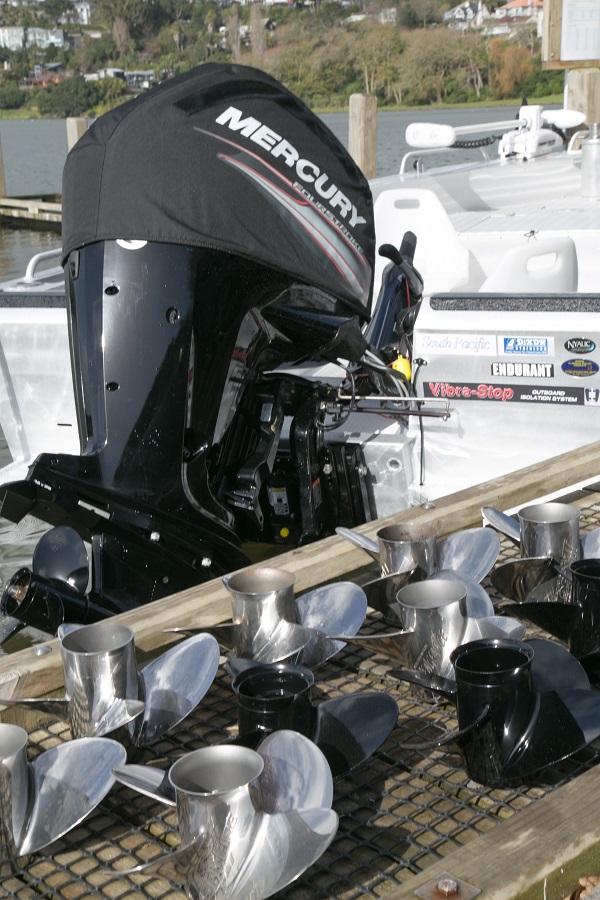
At 1000 rpm there was little difference between all the propellers, with the range from 2.1 to 2.4 lph. At 3000 rpm, with the boat on the plane, the range again was hardly worth changing props for, with the Trophy 17 recording the best at 8.8 lph and the Laser 19 the worst at 10.6 lph. Average for all eleven was 9.43 lph. Again at 4000 rpm, the differences were not significant with the best on fuel being the Spitfire 15 X7 (my current propeller) with a fuel burn of 16.1 lph, which was much the same as the Vengeance 16. The Trophy 17 and the Spitfire 17 both recorded over 20 lph. Average for all was 18.48 lph. We had planned to run all engines to 5000 rpm and beyond, but some didn’t make it that far. The Trophy 17 only got to 4500 rpm and the Spitfire 17 X7 topped out at 4650 rpm. The Vengeance 16 ran all the way to 6000 rpm, with the Spitfire 15 X7 and Vengeance 18, both cracking over 5500 rpm. At 5000 rpm we found some noticeable difference in fuel usage, but again nothing special. Best was the Vengeance 18 @ 24.8 lph, with the Vengeance 16, Vengeance 15, Spitfire 15 X7 and Black Max 15 all around the same at 27 lph. Average for all was 26.7 lph.
f What was interesting, however, was when we had each engine running at maximum rpm, from 4500 rpm right through to 6000 rpm, they all topped out at almost the same 26.5 lph – 27.4 lph, with an average of 27.1 lph for all eleven engines. Obviously no matter what the maximum rpm, the 2 litre, 8-valve single overhead cam inline 4 cylinder Mercury 75 can only burn so much fuel. Depending on max RPM and engine load the engine will have a maximum fuel burn however as you can see from the results above it is important to explain to the technician setting up the boat what you wish to do with it, i.e fishing, skiing, wakeboarding, diving etc. The tech can then prop the boat correctly for the application it is being used in.
Performance Plus
There’s no doubt that with the Mercury 75 on the transom, the Fortress 4.8 is a quick boat and after a few seasons now I can say that it handles it with ease. So what was the quickest at the set height? Remember that by simply changing the height of the engine we could have easily altered the results, but as I mentioned previously, we were after mid-range and economy, not top end speed.Three props provided the same top end speed of 57 km/h (35.4 mph). While the Spitfire 15 X7 did it at 5500 rpm, the Black Max 17 and the Spitfire 17 only ran out to 4800 rpm.
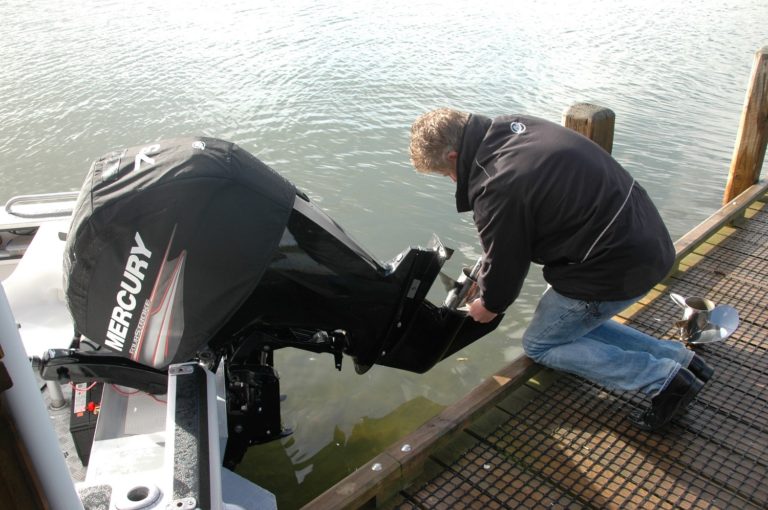
The slowest was the Black Max 15 with a top end speed of 50 km/h (27 mph), followed by the Laser 19, Spitfire 15 and Spitfire 17 X7 at 52 km/h (32.3 mph). In the mid range at around 4000 rpm, the Black Max 17 and the Spitfire 17 X7 both ran at 45 km/h (28 mph). Average for all engines was 41.6 km/h. Up to and including 2000 rpm all the speeds hardly differed. We also checked out the acceleration and holeshot (standing start) times to 4000 rpm. We did this three to four times on each propeller set up to achieve the best average. Quickest was the 3 blade stainless Vengeance 15 @ 2.01 secs and the slowest the Spitfire 17 @ 5.86 secs. There was a big difference right across the range, with four 15” propellers faster than everything else. All the 17” props and the single 19” were all over 5 secs, with the worst being the Spitfire 17 @ 5.86 secs. The reason for the holeshot results above is similar to the difference between driving a car in first gear or in fourth gear.
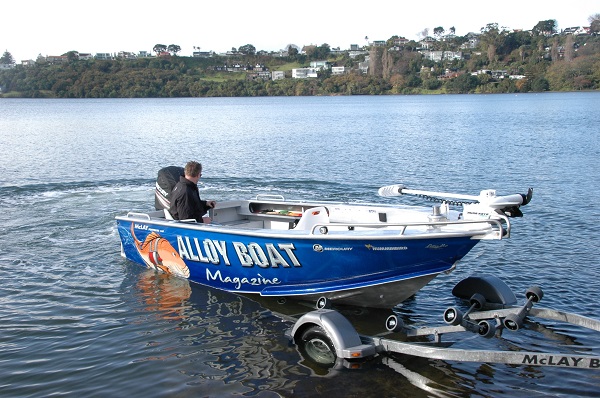
A 15 pitch prop is going to get you up and going very quickly (like 1st gear in a car) but you won’t get to a high top speed and tying this into the fuel figures above, you would get poor fuel usage for distance travelled. A 19 pitch prop is going to struggle out of the hole (like taking off in fourth gear in a car) but you will get a better top end speed and your fuel used for distance travelled will be better. Something to take into account here is that these props tested were not “too” far each side of being correct.
When you go too far outside of having the correct prop the props become inefficient and the small changes seen in this test become big changes.
The prop pitch numbers above are pointed at the boat tested only, prop pitch will differ from boat to boat. A 15 pitch Mirage could be perfect for the job on one boat and a 21 pitch could do the job perfectly on another.
So what was the right propeller?
There are a number of things as mentioned above that will tell the technician what the best propeller for the boat is. However, to start with, the engine has to have its top RPM within the manufacturer’s specifications. From there things to be taken into account would be holeshot, top end speed, fuel economy and what the prop does to the characteristics of the boat. Generally a boat should be propped so the boat does everything “fairly” well rather than doing one of the above fantastically and the others badly. After testing all eleven propellers, the best prop for the boat was the Spitfire 15” X7 that I already have been running. Overall there wasn’t really a whole lot of difference in the propellers and they would certainly perform differently on different boats. However, for now I’ll stick to the one I have as I know it’s right for my boat. Top end speed is about as good as I will get at the engine height it is currently set at and the fuel economy is also just about right. If anything I was surprised at the fuel used by all engines at the top end of the rpm range was very similar, despite the rpm differences. So perhaps even if you don’t have the right propeller it’s not all that bad.




